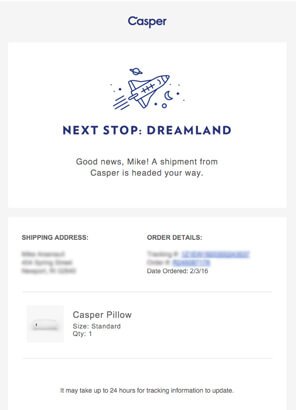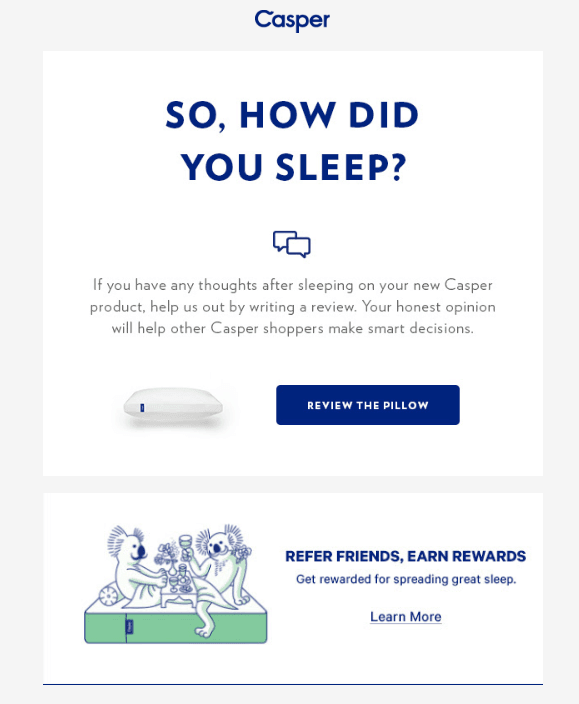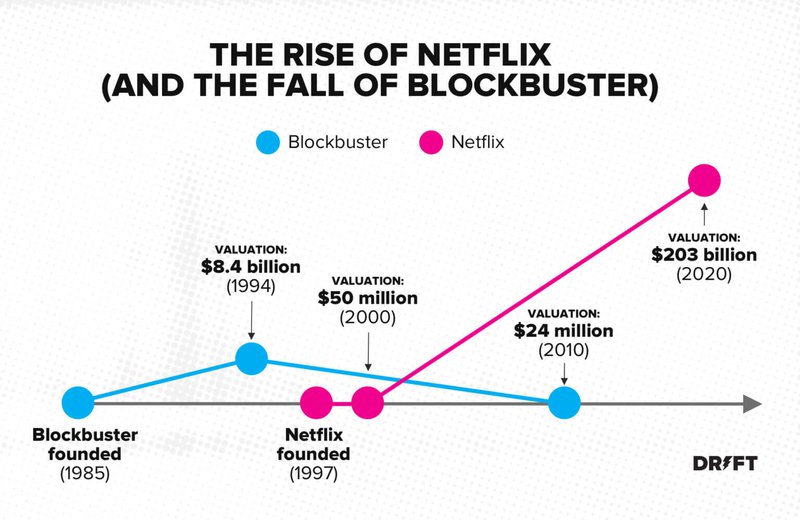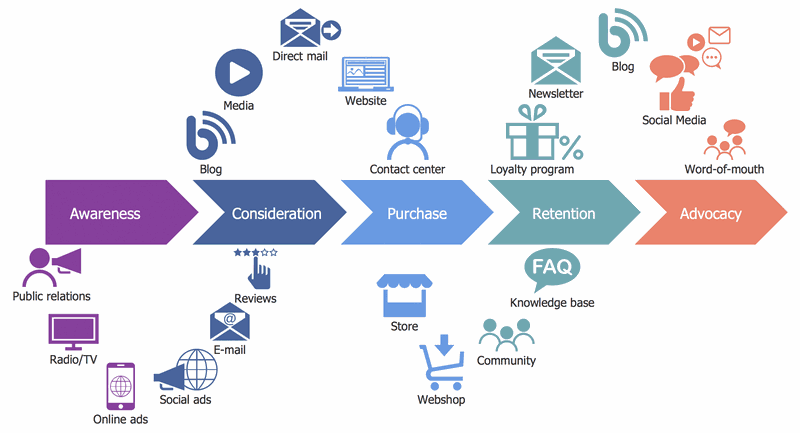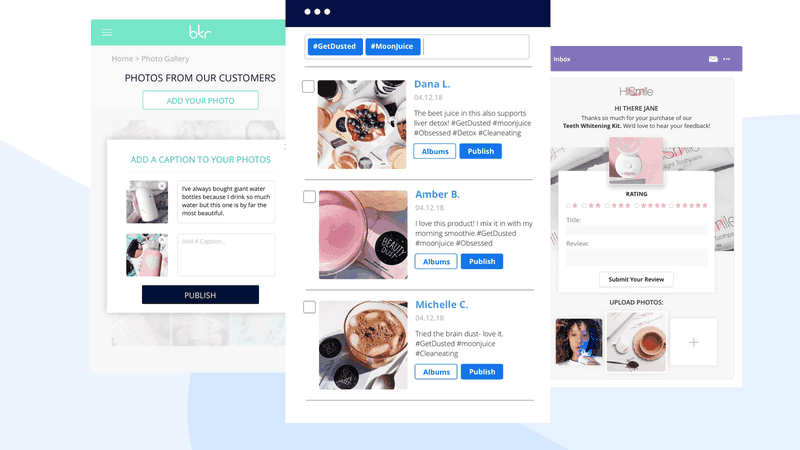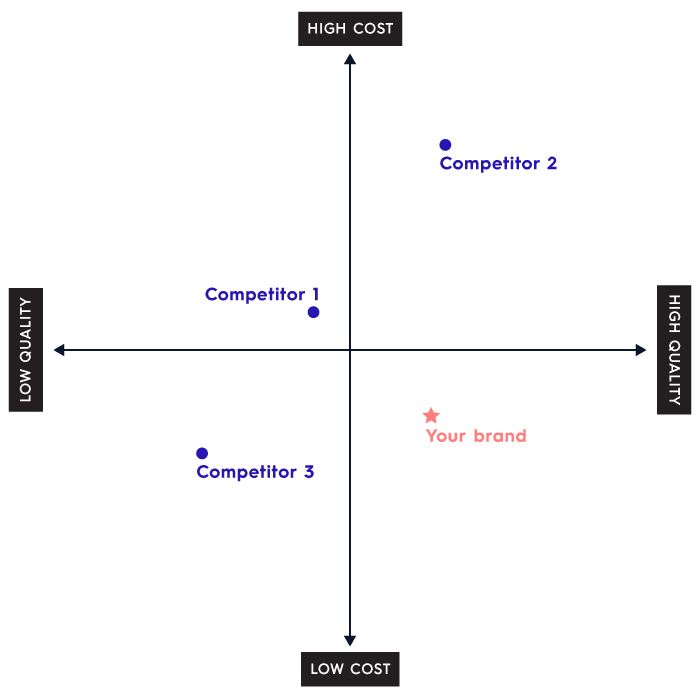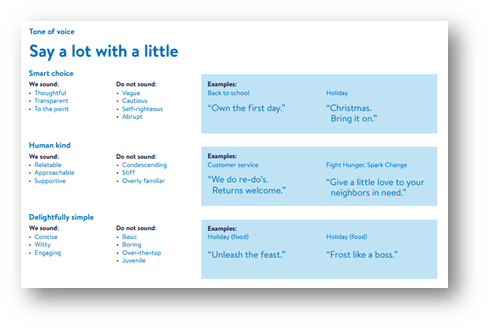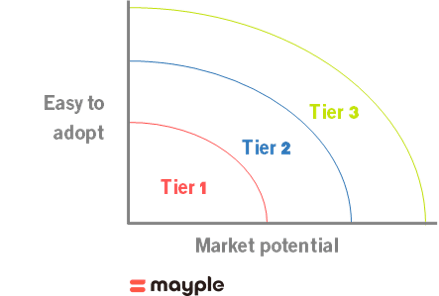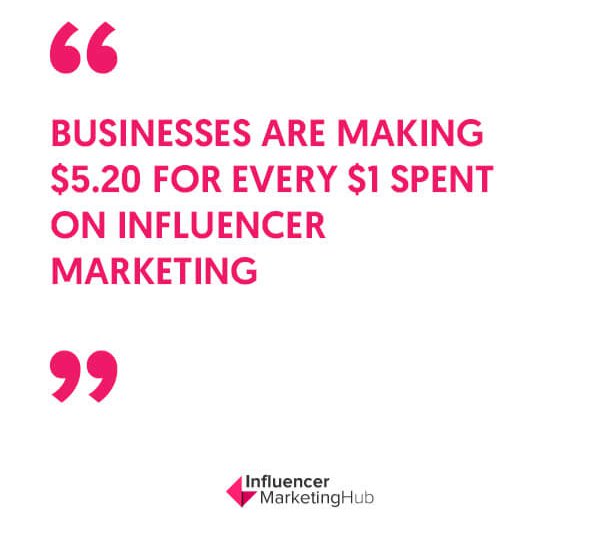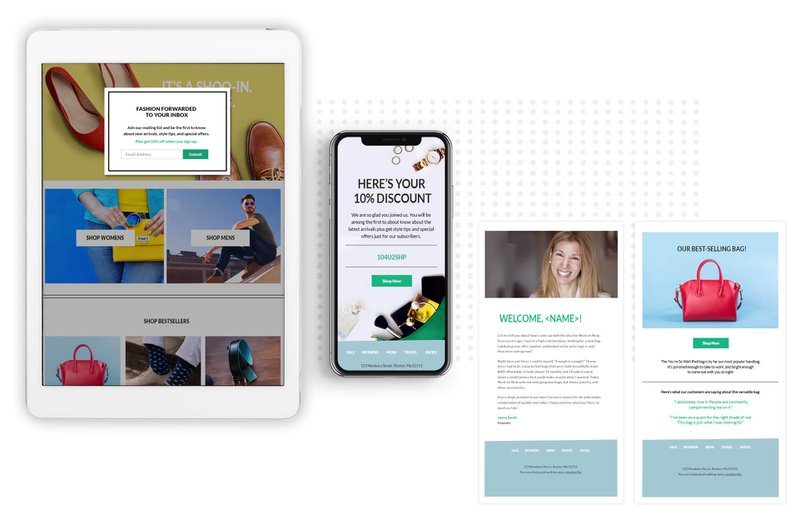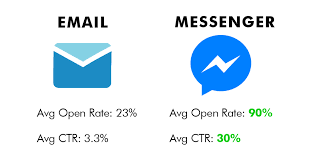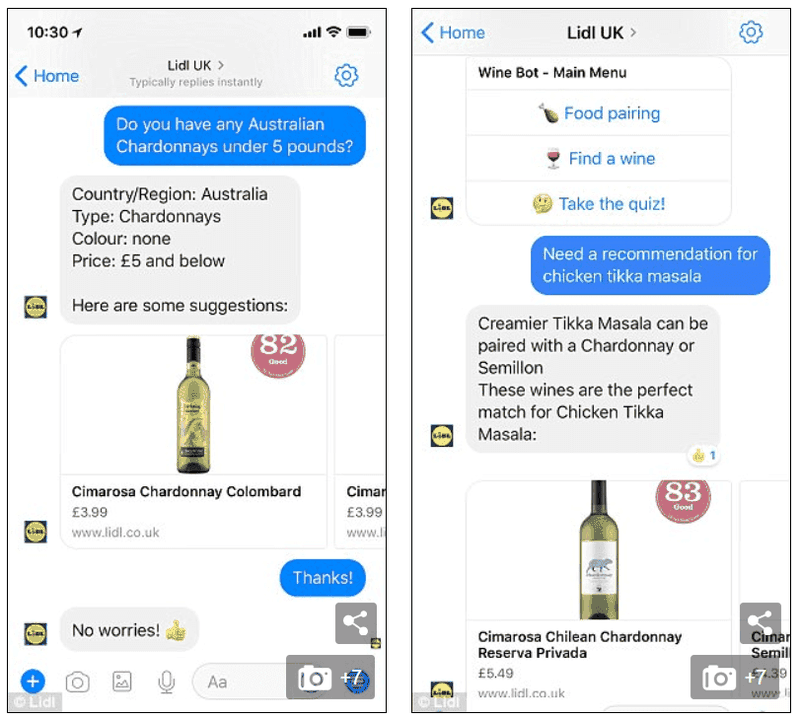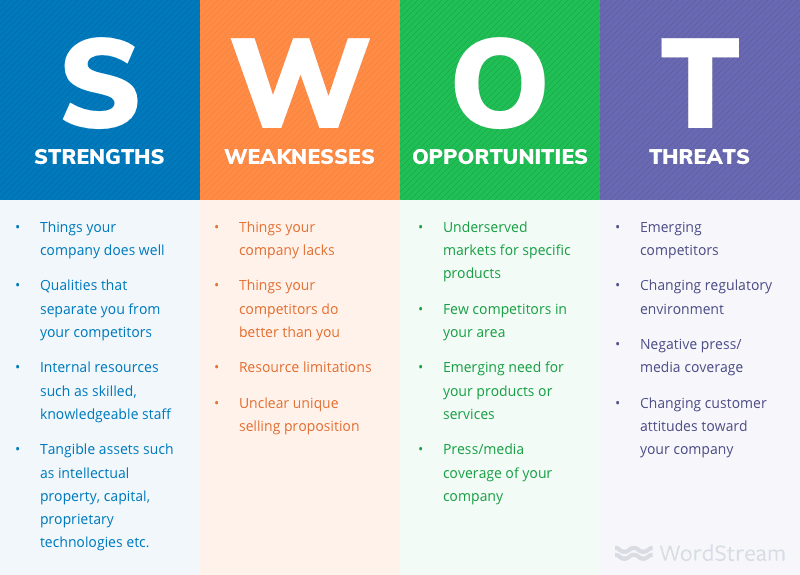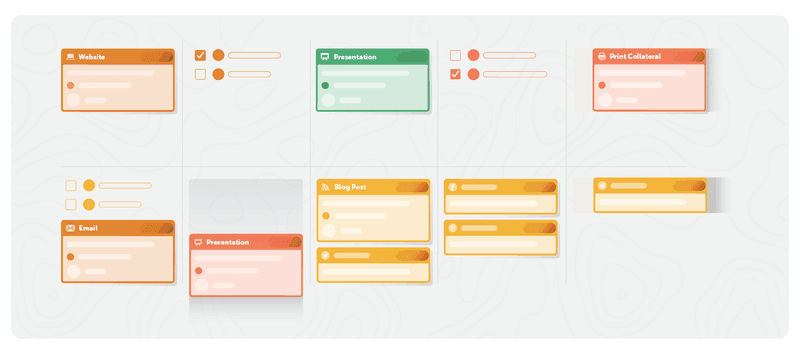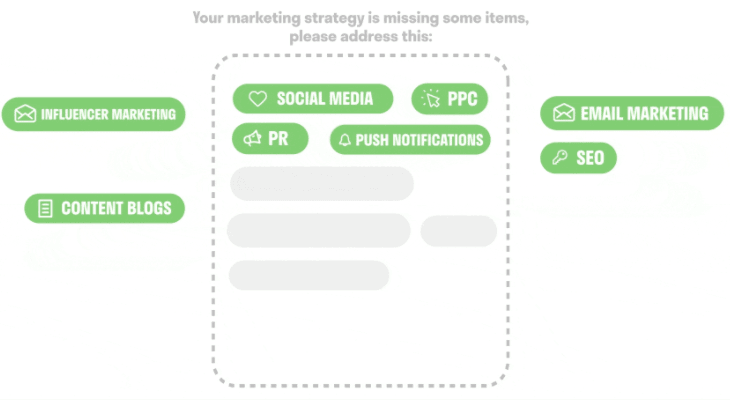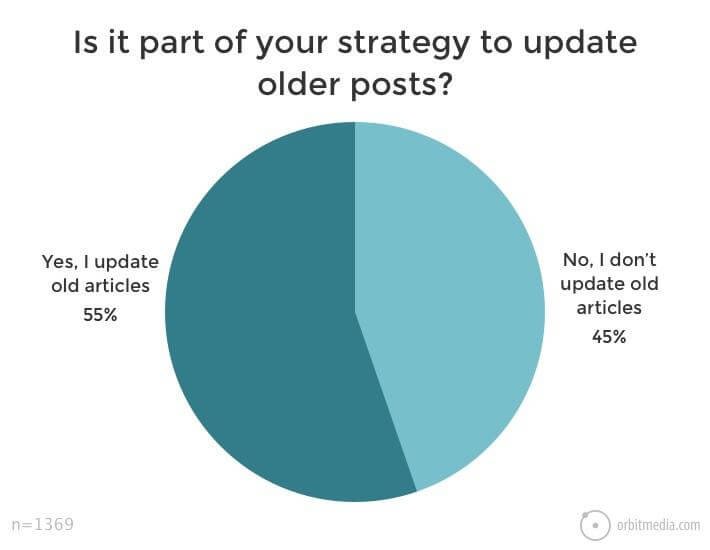Marketing Strategy: What It Is, How to Create the Best One for 2026
It is more important than ever to create and maintain a powerful marketing strategy. Here are the 10 main steps to help you create the ultimate marketing strategy.
Updated November 7, 2024
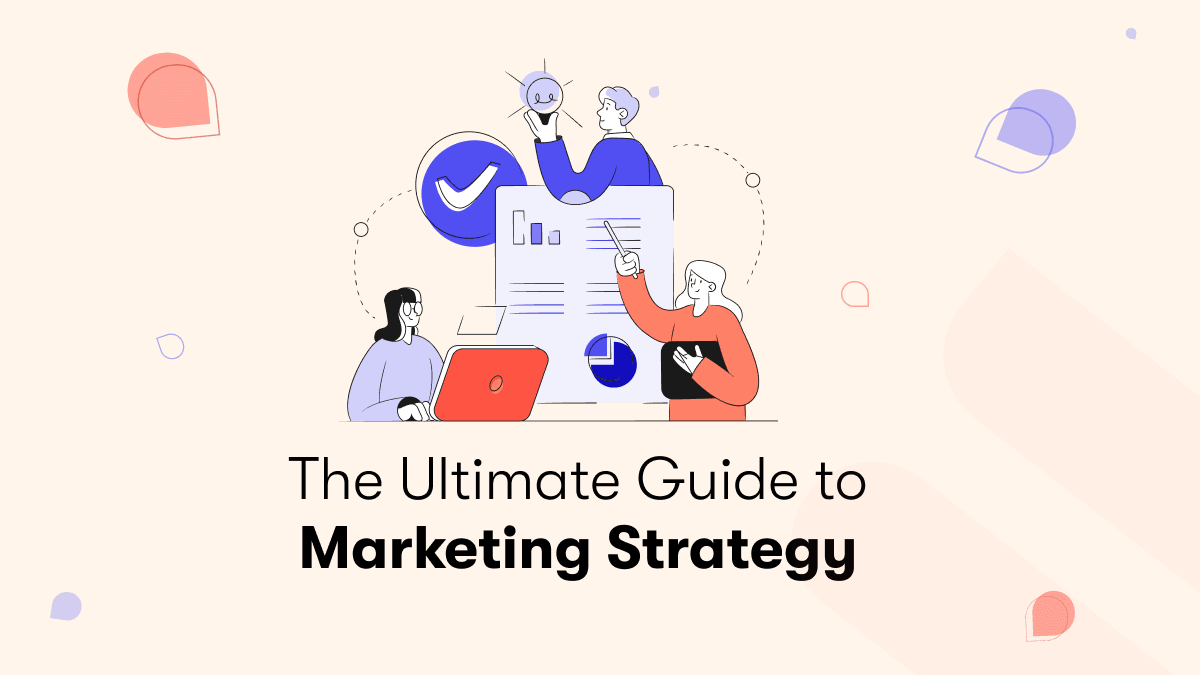
Marketing is a dynamic and ever-changing field. The top digital marketing strategies change with the consumer and technology trends of the day. This is why every company needs a good marketing strategy that's well-planned and has well-defined milestones and objectives. Once you have the right map, the chances you’ll reach the goals you’ve set for your business are much higher.
That means, that while most of us are eager to start launching our marketing efforts the minute after we decide to start a business, we actually need to invest in planning so we won’t waste our limited budget and energies on the wrong things.
If you're a company/startup owner or marketer you need a good digital marketing strategy to hit your goals.
In this guide, we've put together the 10 main steps that you need to follow to build the ultimate marketing strategy for your business. We will take you step-by-step through the process, so you won’t miss a thing and get your digital marketing strategy all figured out.
We have some very useful tips and examples that will make it easier to understand.
If you want to read up on marketing strategy check out our list of the best marketing strategy books.
Now, let's define some of the basic terms.
What is marketing strategy?
Marketing strategy is a long-term, forward-looking approach and an overall game plan of any organization or any business with the fundamental goal of achieving a sustainable competitive advantage by understanding the needs and wants of customers.
A marketing strategy is a broad strategy that encompasses everything from how a company positions itself, to the creative, the strategic partners, the media relations, the marketing mix, and the channels and tactics.
A marketing strategy refers to a firm's overall game plan for reaching prospective consumers and turning them into customers of their products or services. It also contains the company's value proposition, key brand messaging, data on target audience and customer demographics, and other high-level elements.
The broad marketing strategy is what used to fall under the term "branding" back in the more ambiguous days of marketing. It's a practical summary of the key details of the strategy and some of the broad goals and methods used to achieve them.
What is the difference between a marketing strategy and a tactic?
Marketing strategies are broader than specific tactics. For example, a business could have a content strategy for their social media channels or for search engine optimization, and then they could have specific tactics they execute for each channel.
Here's the correct order to follow:
Overall marketing strategy -> Digital marketing strategy -> Specific tactics
For example, here's a great video that introduces specific marketing tactics. These aren't strategies, these are very specific ways you could grow your sales, which would all be included as part of a larger set of marketing strategies inside of your marketing plan.
» Looking for specific tactics? Head over to our Ultimate Guide on Digital Marketing.
What is the importance of marketing strategy?
Sometimes marketers and eCommerce owners get lost in the weeds, in the bits and bytes. They lose track of the overall vision of the business and the large goals. They lose track of the target audience and the main pain points that their product solves for the customer. When that happens, the specific tactics that the business employs can lose their effectiveness.
So, a marketing strategy is not some dusty old document that you put on the top shelf and forget about it. It's a vital process of discovering your company's top goals and objectives and ways to achieve them. That becomes a blueprint or a sample marketing plan for everything you do to better market your product or service.
Excited?
Let's jump into it.
1. Define your brand value and offering
Your brand strategy is about defining the core values of your brand to make sure that they align with what your prospect and existing customer find important, that they align to your industry trends and competitive environment, and to what you actually offer ie your product.
That’s not an easy task, but without it, all the other marketing tasks become much more difficult.
Here are some good marketing strategy examples from data-driven brands that succeeded in doing it right:
AllBirds - Sustainable, transparent, comfortable
AllBirds began as a darling brand in Silicon Valley in 2014 and quickly grew to a $1.4B valuation in 2018. The shoe company set out to create the world's most comfortable, and they overshot their goal.
Their products are fully sustainable and made out of wool and bamboo, and their branding is impeccable. Their mission statement reads - "Allbirds is on a mission to prove that comfort, good design, and sustainability don't have to be mutually exclusive".
In just four years they became the market pioneers of sustainable footwear. It all started with a launch on Kickstarter, in fact, here's their Kickstarter video:
The brand has a really quirky brand voice, and its values are transparency, sustainability, and comfort.
Here's an email with an order confirmation:
You can see the same quirky humorous brand voice in their social media posts.
Besides the humor and the spunky brand personality, the brand has really taken advantage of this concept of transparency. They display the materials they use in a creative way and get down to the fine details.
And that ties really nicely with their overall mission and their third brand value - sustainability.
Ultimately, the quirky brand voice and the incredible brand values of sustainability and transparency led Allbirds to build a super-engaged audience online that has contributed the most to the brand's growth.
Yes, it is a really comfortable product (the NY Times called it "the most comfortable shoe in the world"), but without a strong brand and a focus on the user experience, Allbirds would not have been the giant that it is today.
Casper - "here to awaken the potential of a well-rested world"
Casper is a mattress company that has completely revolutionized the industry. They were the first direct-to-consumer mattress company and quickly grew to a $1.1B valuation in 2019.
Casper's brand values are all about dreaming big, innovation, and bringing joy to a tired industry.
Look how they merge the "dreaming big" brand value with a pun about sleeping in their purchase receipt email.
And here's another great email asking for a review.
Casper's strong brand helped it launch other successful products, like the Casper Glow, which is an innovative bedtime light that changes its light temperature and brightness automatically and can be remotely controlled through an app.
There are a lot of big and abstract words thrown around when talking about brand value creation, so here's a simple way to think about it.
A simple formula to find the right values that define your brand is this:
- Think about the main pain points/needs/frictions your brand is solving
- Translate it into a value-based language
- Make sure it fits your beliefs and motivations
2. Identify customer pain points and expectations
"People don't want to buy a quarter-inch drill. They want a quarter-inch hole!" - Theodore Levitt, Harvard Business School Professor
One of the top reasons why products or services fail is when their makers fail to identify the customers' pain points. In other words, they don't meet the customer's needs or they don't solve a vital problem in their lives. Also, those needs may change over time so it's important to continue examining the customer journey and solve your current customer challenges.
One of the classic examples is the Segway. It was a device that was said to eliminate walking. It could go up to 12.5 miles per hour, had a lithium battery, and made you look like a dork. It was hailed as the device that would make walking obsolete, and it failed miserably.
It's a sad story but the creator of the device actually drove it off a cliff and died. The problem with the Segway is that no one wanted to stop walking, people love walking, people loved running, so it failed to meet the customer's need and to identify a pain point.
What are the different types of customer pain points?
Financial
the most basic pain point is financial. Does your product help your customers save money? Is it more cost-effective than the alternatives? Are the savings short-term or long-term? And if your product is cheaper than the alternatives, does that price difference create enough value for the customer?
These are some of the important questions you should ask yourself. An example of this is Target's launch of the brand Smartly with hygiene/cleaning products all under $2 (approximately 70% less than similar products by other brands).
Convenience
Another really important pain point is convenience. Does your product make your peoples' life more convenient? The classic example of this is Netflix, a brand that became a household name because it was incredibly more convenient than it competitor Blockbuster.
Instead of having to shlep to Blockbuster, for example, and pay all of those late fees customers could now get DVD's straight to their doorstep. Fast forward to 2020, Netflix is worth $203 billion and Blockbuster is is out of business. The company that made me more convenient for people won.
Service
Service is another major factor in solving a customer's pain point. Service refers to the entire customer experience and includes things like - warranty, maintenance, replacements, customer service, and ease of use. A really good example of this is the solar company SolarCity, which was acquired by Tesla in 2016.
SolarCity's solar panels weren't cheaper than the competitors they simply had a better warranty and maintenance on them and that's why customers preferred them. This is one of the major drivers that helped SolarCity become the nation's largest residential solar provider.
Easy steps to identify your customer's pain point
Ok, so we've talked about the type of customer pain points that there are, but how do you identify them for your own company and product? Here are some helpful suggestions that will get you on the right path.
Create a customer journey map
Identify what makes your customers buy your product and how they arrived at your physical or online store. This should include the channels that they visited - a search result, a Facebook ad, a social media post, an email, and other online and physical media. At each stage identify possible pain points and uncover the customer's motivation for using your product.
This will also help you evaluate your marketing mix and see if there are any channels that you need to add.
Survey your customers
Another good way to find the customer pain point is by surveying your customers. Ask your customers what they like and don't like about your product and what are some of the factors that led to their choice. There are a ton of survey tools you could use like Typeform or SurveyMonkey.
Look at customer reviews
If you are thinking of launching a new product you should look at the customer reviews of your existing products. These will tell you a lot about your customers' preferences, expectations, and pain points. What's particularly powerful for eCommerce sites are visual reviews - photos or videos that customers post alongside the text of their reviews. You can use tools like Pixlee, Yotpo, or Loox to collect and display visual reviews.
Ask your sales team
Another good way to find your customer's pain points is to ask your sales team. After all, your salespeople are the ones that hear and have to respond to the objections of your prospects and customers, hence they are the most aware of what people are looking for in your products or services.
Sit down and have a discussion with your sales team. Try to find out what your customers like/dislike about your product, what are the issues that they bring up the most, and what makes them turn down the product. If your marketing team interfaces directly with your customers you could also ask them for feedback.
Study your competitors
It's super important to conduct a competitor analysis to analyze the competitor landscape, in any industry. That's how Netflix and Apple began when they strove to make a product that's better and more innovative than the status quo. Identify where you are, and what your market position is.
Look at all your competitor products, their marketing mix, the type of promotion and media they publish, and their strategies. Identify the pain points that they are solving and ones that are still unresolved. One strategy is to try to solve the same pain points, just better. Another strategy is to go after pain points that remain unresolved, to create something that people haven't seen before.
Use the STP framework
Another effective marketing technique is to use the STP framework. STP stands for segmenting, targeting, and positioning.
- Segmenting - is where you divide the market into distinct groups (or target market segments).
- Targeting - is where you determine which customer segment you want to focus your marketing efforts on. And
- Positioning - is the creation of the brand position, the marketing mix, and other various marketing strategies in order to appeal to your potential customers in your target market and try to influence them to make a purchase decision.
The STP framework helps brands identify the types of marketing strategies and channels that will be required to successfully market their product or service to their customers.
3. Identify market trends and competition
That brings us to our next topic - creating a competitive analysis. This is a crucial step in the marketing strategy plan creation because this is where you will identify what differentiates your product or service from the competition.
You can do this through a simple SWOT analysis to determine your brand's strengths, weaknesses, opportunities, and threats. Without this step, it's going to be very difficult to create a product that provides unique value to the consumer and stays competitive with the market trends of the day. So this analysis is crucial and this is how you go about it:
Identify your competitors
The first step of any competitive analysis is to find out who your competitors are. Find out all the different companies that have similar products and services. Look at their social media content, search in related or niche online communities, news mentions, and product reviews.
Categorize your competitors
Now that you have a detailed list of all of your competitors it's time to categorize them. Put them into different groups - primary, secondary, and tertiary competitors. This will help you get clarity on which of your competitors are directly competing with you and which ones you should focus on in your analysis.
Take a look at their social media and branding
The next step of the competitive analysis is to find out all you can about each competitor. Look at all the various social media pages, the content, and the branding that they use on their site and their email marketing campaigns. This will give you a visual understanding of their brand positioning and how your product or service differs from theirs.
Be sure to check out their influencer marketing campaigns to see the kind of branded image that they try to portray online. Look at their display ads (owned media) and UGC(earned media).
Conduct a site audit to look at traffic sources and positioning
This part is the more technical side of the branding audit. Use a tool like Ahrefs, SimilarWeb, or Alexa to check the keywords that each competitor ranks for and their various traffic channels. This will give you the precise search terms that the user searches for and the specific needs that your competitors meet.
For example, you might discover that a competitor is using a type of content that you're not using yet or a traffic channel that you haven't expanded into. This is super valuable information to have for your online marketing strategy.
Look at their pricing
Use a tool to track competitor prices and see how you compare on various products, categories, and by season. Your cometitors may be using different pricing strategies on holidays, weekends, or busy seasons (depending on your niche) and you can get ahaed just by using a few dynamic pricing rules and tweaking your strategy a bit. So this part of the research is critical.
4. Create your value proposition
Now that you have your story right, it’s time to build the right strategy for your marketing. That means making business decisions about what you are delivering and to whom.
Your product or service tells the most about your brand.
This is the actual hands-on experience prospects and customers have with your brand, and it can affect their perception of it the most.
Use your values to make sure you walk the talk and implement what you said about yourself in your offering.
Here are some examples to help you get the hang of it:
Walmart - translating brand values to service language
IKEA - Brand values & design
Most people will know right away this is IKEA’s products - humble, simple and functional.
5. Identify your target audience
Deciding on your target audience could change the way you present your brand and even the language you use to do it.
We love to use simple models for complex decisions.
We found it is much more effective and fun.
Use this model to map the different target audience groups that you have, and prioritize them accordingly in your audience analysis.
(This is actually one of the models we used to determine our target audiences)
You would want your first-tier target audience to have good market potential for business growth, and it wouldn’t be a Via Delarosa to convince them to buy what you have to offer.
This is not the only tool you need to characterize the people you are going to invest most of your marketing spend to reach out to.
The second tool we recommend for you to use is defining your personas - or, in other words, asking who your ideal customer is, your target customer, to the smallest details.
To define your main persona you can use this question list:
- Who is my persona? Is he a male or is she a female? What age is he or she? Name your persona and attach a photo so it will be easier for you to plan your messaging accurately.
- What is my persona's initial state of mind? - his or her emotions and thoughts before starting the decision-making process?
- What are the different stages of his or her decision-making process until purchase?
If you’re about to launch a new service or product that prospects or customers are not used to using or buying, you might consider applying this psychology of change model. After all, you’re trying to change people's perception here.
Each stage represents a psychological state of mind of people until they reach a decision to take action. You can use the needs that are listed below to create your marketing creative tools that will effectively move your persona to take action.
Identify the following for each stage of the buyer's journey:
- What are your persona’s expectations? What are his goals?
- What process does she go through in this stage? Where does she look for information? Who do they speak with?
- How would you describe the customer's experience at each point of the customer journey?
- What is your objective for each of their decision-making stages?
- What actions can help you achieve these objectives?
Now that you've identified your ideal customers, how are you going to reach them?
That brings us to the next step.
6. Identify partners and potential collaborators
Identifying your potential partners or collaborations is a critical step of reaching your ideal customer. It may be that there are online communities that already exist where your customers hang out. It could be that you need to work with a distributor or get a marketing partner to help you reach them.
This is a critical point to consider before you execute your inbound marketing strategy. Sometimes finding and working with the right partner could give you access and help you achieve 10X the results. This could be through revenue sharing or an affiliate program. It could also be done by social networking at industry events or online conferences.
We’re on the digital marketing portion of our guide and it contains 3 parts - deciding on your creative & messaging, selecting the marketing channels that you’ll be using, and deciding on a strategy and a marketing budget for each channel.
Let’s dive in.
7. Decide on the messaging and creative of your brand
Most businesses (and especially startups) can’t afford to hire a digital marketing specialist in-house so they use the services of freelancers or digital agencies.
From now on, you have a critical job of guarding your brand’s values and strategy in the messaging and creative you’ll create and the different tactics you’ll use.
That’s what storytelling is about.
Make sure that the service provider you hired is aligned with your brand and the various marketing strategies that you want to employ, so they can apply your strategy to the actual marketing communication you’ll have with your potential customers.
Here are two brilliant brands that keep to their authentic brand strategy throughout their messaging:
National Geographic - how to create the “wow” and “wonder” visually
National Geographic knows how to present stunning photography and help us discover the wonders of our world. They constantly keep the language they use on their ads (paid and earned media) to be aligned with these brand values.
8. Define your marketing channels
Now that you have defined your value proposition, your partners, and your creative assets and messaging it's time to select the right marketing channels for your marketing mix.
This is one of the most crucial steps in the process of creating your marketing strategy. Each digital marketing campaign will vary greatly based on the marketing channels that you'll pick. You need to select those marketing channels that fit your brand and your product.
Let's cover a few of the main marketing channels and their best practices.
Social media
Social media marketing is a vital part of any digital inbound marketing strategy and there are certainly a lot of things that you could do. Also, keep in mind that successful social media campaigns can help you get more traffic from search.
Organic social media is used for the awareness stage, or the lead generation stage, of the marketing funnel while a Facebook ad is used for the last stage, or the conversion stage. There are a lot of various platforms and strategies you could use and it's important to pick the right channel for your product.
Here’s a breakdown of some of the best and most effective social media channels to use for different types of companies:
- For visual eCommerce products - use Instagram and Pinterest, TikTok, Facebook, Snapchat and Twitter
- For B2B companies - use LinkedIn, Instagram, ProductHunt, and Angellist
- For B2C companies - use Facebook, Twitter, Instagram, Pinterest
- For written content-heavy companies - use Medium, Quora, and Reddit
- For GenZ-focused companies - focus on Instagram, Snapchat, and TikTok
Red Bull is a great example of a brand that has a brilliant social media marketing strategy. Early on they realized that if they wanted to connect to their target consumer they couldn’t just use the traditional marketing and sales campaigns that all the other beverage companies were using.
They decided to create videos of athletes breaking world records and doing unthinkable things like jumping off airplanes and falling 23 miles and skiing down the Himalayas. To date, the Red Bull YouTube channel has garnered more than 10 million subscribers and more than 2.5 trillion views.
This is obviously a very expensive strategy and won’t make sense for most brand marketing budgets, but it’s a good example of a brand sharing success stories and targeting their consumers the right way on social media.
Social advertising
Ads are becoming more and more popular on social media platforms because the recent algorithm changes continue to favor them and decrease organic reach. After all, that’s how social platforms make their money so you have to use paid media to get anywhere these days.
Pinterest, Facebook, and Instagram are the most popular platforms for advertising. For B2B you can use Quora, Reddit, or LinkedIn.
Top Advertising Tips:
- Create a lookalike audience on each platform and for each type of campaign that you're running
- Organize your campaigns based on the marketing funnel (top, middle, and bottom)
- Match your copy and designs to your target audience
- Retarget your audience and site visitors on Facebook, Pinterest, and Google.
Paid Advertising
Social media advertising is just a subset of online advertising. Other digital advertising can include native advertising, Google ads, Google shopping, banner ads, and much more. Each ad requires thorough strategic planning to make sure that the messaging and creatives match your market segments to help attract new leads and retain current customers.
Influencer marketing
Working with influencers is one of the most lucrative marketing channels you could go into. Studies show that businesses make $5.20 for every $1 that they spend on influencer marketing. And 49% of consumers depend on influencer recommendations for their purchase decisions. That’s huge.
That means that on average about half of your customers are going to be searching for influencer posts so it is essential that these people are recommending you and your product online. Now, influencer marketing is different than when your users post images of your product. Influencer shots are called paid media (just like ad campaigns) while user-generated content (UGC) is called earned media.
Top Influencer Marketing Tips:
- Pick influencers based on the type of audience they have, and their level of engagement (not the size of their following)
- Run giveaway campaigns with groups of influencers
- Run stories on Instagram because they are clickable
- Conduct competitor research to see which influencers they are using on all the relevant platforms
- Use YouTube influencers to create videos about your product or service
- Use real data to determine which influencers are your best performers
Pro tip: Looking to find the right influencers for your next campaign? Check out our list of the top influencer marketing tools.
Email marketing
This is going to surprise you but the ROI of emails still remains among the highest in all of the different digital marketing channels and platforms. Studies show that email marketing provides a $42 return on every $1 you spend, which is terrific.
Top Email Marketing Tips:
- Use UGC or earned media in your campaigns
- Set up email campaigns and email flows (cart abandonment flow, welcome flow, sunset flow)
- Create campaigns with educational content, don't just send constant product promotion
- A/B test different types of content, copy and formats based your data to better match your campaigns with your audience
- Continue to grow your email list with popups, subscription forms, contests, giveaways, and promotions
- Create segments based on customer engagement or average order value and create personalized campaigns
That is not to say that the other channels don’t help or assist the sale, it’s like the functions of the various team members in a soccer match. There could have been 5-6 players that touched the ball before it reached the goal post. The same thing happens in marketing.
A user can interact with a brand on numerous channels before they buy their products or services. Which is why it’s really important to have an effective “omnichannel” strategy, a strategy that includes many marketing channels.
Here are a few examples of channels that work really well when combined with email marketing:
Push notifications
Push notifications are those messages you get on your browser on a desktop device or on your mobile screen. They work really well when combined with emails. You could send off the email in the morning for example, and then follow it with a push notification 30-60 minutes later, to remind the user to check out your deal of the day.
Push notifications have a click through rate that’s 7 times higher than emails, so when sent after the email they increase your chances of getting a sale that much more.
Chatbots and messaging
One of the quickest and most effective ways to communicate with customers is through text messages and this has become its own marketing channel. You can set up automated messages and flows that gets sent to a customer or even a chatbot that is able to bring them from product discovery all the way to purchase, without any human involvement.
You can also use this channel to send people a product promotion, a cart abandonment flow, or a content promotion.
Text messages are much more personal and that’s what makes them so powerful for brands. According to Social Media Today, chatbot messages get open rates of over 80% and click-through rates of over 50% so these messages provide an additional and very effective way to augment and boost your email marketing performance.
Search Engine Optimization
One of the most overlooked strategies is Search Engine Optimization, especially for eCommerce. It involves optimizing a site's content to make it easier for search engines to find it and display it.
There are numerous new ways to get displayed on search engines than ever before - in the images section, as videos, quotes, products, how-to's, Q&A, and much more. SEO is a super effective marketing channel and can bring a lot of targeted and high-quality traffic to any site.
Top SEO tips:
- Use Google Search Console data to find the keywords and searches that you get the most traffic from
- Optimize your on-page content with a tool like Ahrefs or Moz
- Build a comprehensive backlink strategy based on competitor data and best practices
Now remember, not all SEO best practices will fit your needs or make sense. It's a delicate balance between SEO and the user experience (UX) and that requires some tough decisions sometimes. So always learn from your data and keep your audience as first priority and you will win.
Content Marketing
Last but not least, let's talk about your content marketing strategy. Content provides a way for users to find your product or service online. Use content to target your ideal buyer persona, acquire new customers, and delight and retain your existing customer base.
To use content marketing successfully, brands have to create different content for each part of their marketing or sales funnel. For example, a company might put educational content at the top of the funnel for first-time visitors and more promotional content for those shoppers who are ready to buy.
Top Content Marketing Tips:
- Write long-form blog posts for organic search traffic
- Publish comparison and shopping guides for the middle-of-the-funnel visitors
- For B2B: create lead magnets, white papers, and gated marketing research
- Use UGC, video content, and longer descriptions on your social media posts to tell your story
Public Relations (PR)
Last but not least, there's PR. Public relations is one of the most effective growth strategies that can help solidify your brand image and expand your digital presence.
Now that we’ve covered the various marketing channels that you should consider to grow your business, let’s talk strategy.
9. Select a strategy and budget for each channel
It’s now time to select a specific strategy and a budget for each of the marketing channels that you’ve chosen for your brand. Here are a few helpful steps:
Identify your business goals
What are your goals? Pick a few strategic business goals or KPIs (key performance indicators) to focus on in the short term. A really helpful rubric for this is what’s called SMART goals. Smart stands for:
- Specific - describe clearly what you want to accomplish
- Measurable - set goals that you could measure
- Achievable - these goals have to be achievable and not way out of reach
- Relevant - set goals that improve the specific aspects of your marketing, so no vanity metrics.
- Time-bound - pick marketing objectives that you can achieve within a certain time frame.
Now that you’ve set up your goals it’s time to look at your market.
Here's a fantastic video from Hubspot to watch about setting the right marketing goals for your business:
Conduct market research
Gather information about your market - the size, growth, social trends, search trends, and demographics of your target market. Find out what is possible and feasible to accomplish and which channels, content types, and media, are used to reach your target customer, and which you should add to your marketing mix. You can use a PEST analysis or a SWOT analysis to help you with your market research.
A PESTEL analysis is a marketing framework or management method that helps businesses assess major external factors that influence its operation, in order to become more competitive in the market.
PESTEL stands for political, economic, social, technological, environmental, and legal. For example, legal factors could include a new regulation that significantly limits a brand's ability to sell their product in a particular region. Political factors could include new trade restrictions, tariffs, or a new tax policy. Environmental factors could include weather conditions, seasonality, and even natural disasters.
Align your strategy with your ideal customer
Go back to the customer personas that you’ve created at the beginning of this process and make sure that your strategy aligns with your personas. Look at the trends, at the type of customers that you are going to be able to reach, and tweak accordingly.
It’s performance time!
At this point, you have your brand story and values, your go-to market strategy, and a professional to run your marketing efforts.
From this point forward, you should focus on much more tactical management. That means iterative testing of your content and creatives, of your target audience segments and even of the words you use on your ads CTAs (call-to-action buttons).
Which brings us to the last step of the process:
10. Analyze your results
This is one of the most crucial steps in anything you do in marketing. Once you test something you have to analyze the results and continue testing. Data is crucial in every aspect of marketing and the omnichannel data you get from testing marketing strategies is the best kind of data to have. Smart marketing managers use data to continue iterating and optimizing their growth strategies.
Once you have the results of your strategy you can then make the changes you need to make and A/B test various aspects to get even better results.
BONUS: Examples of Marketing Strategy Templates
There’s no one-size-fits-all marketing strategy, and if you’ve read this entire guide to this point - you’re probably eager to implement some of the various strategies we talked about. And you’ve probably discovered a lot of topics that you should learn more about to really perfect your marketing strategy.
Here are some of our favorite resources + marketing strategy examples + templates. These are really effective and comprehensive. They cover a really broad range of channels and use cases so you can find some value regardless of which business you’re in. Choosing the right marketing strategy template is the secret behind creating an effective marketing strategy.
Let’s dive in.
How to Plan Your Marketing Strategies in 12 Steps (CoSchedule)
This beautiful strategy guide has everything you need to know to create the perfect strategy. The best part is that it shows everything visually in each section, and has a really simple marketing strategy template to follow to create your own strategy.
Plus, CoSchedule started off as a content marketing tool for inbound marketing teams (they are now much more than that), so they go into a brief history of content marketing, inbound marketing, and how it all started.
The best part about CoSchedule is that they have a feature where that allows you to divide the tasks among your team members. For example, if you're a content team manager you can use this to visually display who writes each piece of content, who edits it, and who publishes that piece of content on the team.
This is a crucial and super effective step that gets missed pretty often. Once a brand makes their strategy, it’s important to delegate the work and get started on the execution.
10 Marketing Strategies to Fuel Your Business Growth (Entrepreneur)
This is an old one but when we read it we thought it has the perfect sequence of some of the most successful marketing strategies for an eCommerce business. It has literally everything you need to market successfully.
We’re talking influencers, email marketing automation, content marketing, video content, Facebook retargeting and search engine optimization. This post is an excellent broad overview of eCommerce marketing at its finest.
The Essential Guide to Marketing Strategies (Hurree)
Hurree is one of the best marketing blogs ever. This post in particular gives a really good detailed overview of each step of creating a marketing strategy. It also has a variety of videos sprinkled throughout the post that explain concepts deeper, and the best part - they have a whole section of marketing automation. Hurree is a marketing automation platform so you know to expect some talk of automation in every single one of their posts. This is a segway from traditional marketing principles to present-day automation and beyond.
The 11 Best Marketing Strategies We Tried This Year (WordStream)
This post is for the more advanced marketer who wants to really hone in on the top strategies that work in 2022. It’s written by Sujan Patel, the one and only, and he goes over things like webinars, reaching out to other tools in the industry, brand partnerships, search marketing, evergreen content, SMS, and non-traditional social media channels. Check out this post, even though it was written in 2018, it remains one of the best lists of marketing strategies on the web.
The Ultimate Digital Marketing Strategies Guide (HubSpot)
This is a classic resource from HubSpot and we like about it is how clearly they define every term, every type of content and marketing tactics that you should develop. They also include 5 examples of marketing ads and dissect each one. It’s a great read and you will get a lot of value out of it.
That’s it, folks.
Now that you have a better idea of how to craft the ultimate marketing strategy for your business or startup it’s time to go out there and absolutely smash it.
FAQs
What are the 5 marketing strategies?
The 5 P's of Marketing are - Product, Price, Promotion, Place, and People. These are key marketing strategies that are used to position any business strategically.
What are the 5 C's of marketing?
The 5 C's is a technique used to help marketers better position their business and make more informed business decisions. The "5 C's" stand for Company, Customers, Competitors, Collaborators, and Climate. It's a type of analysis that helps marketers look at the whole picture as an ecosystem in which the business lives in.





